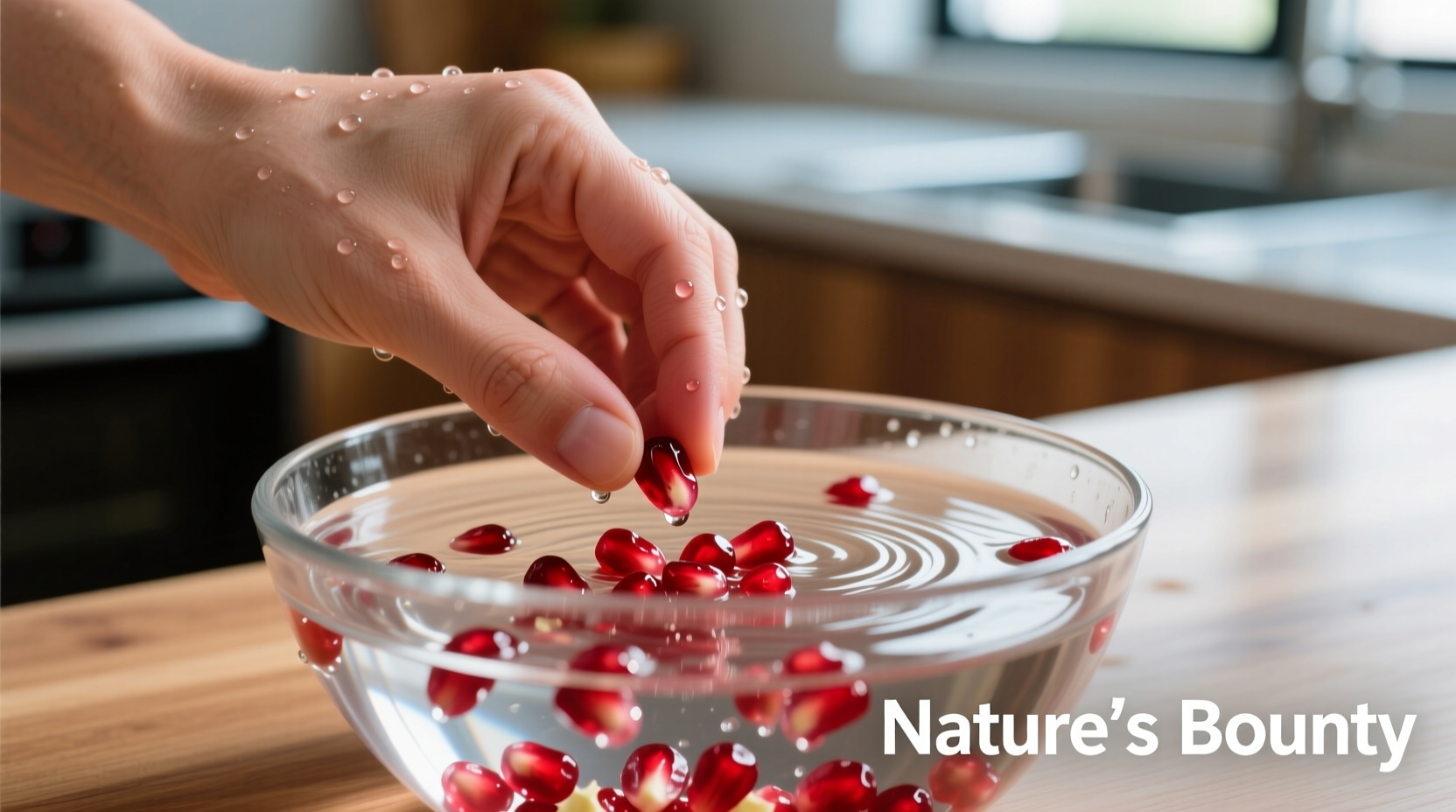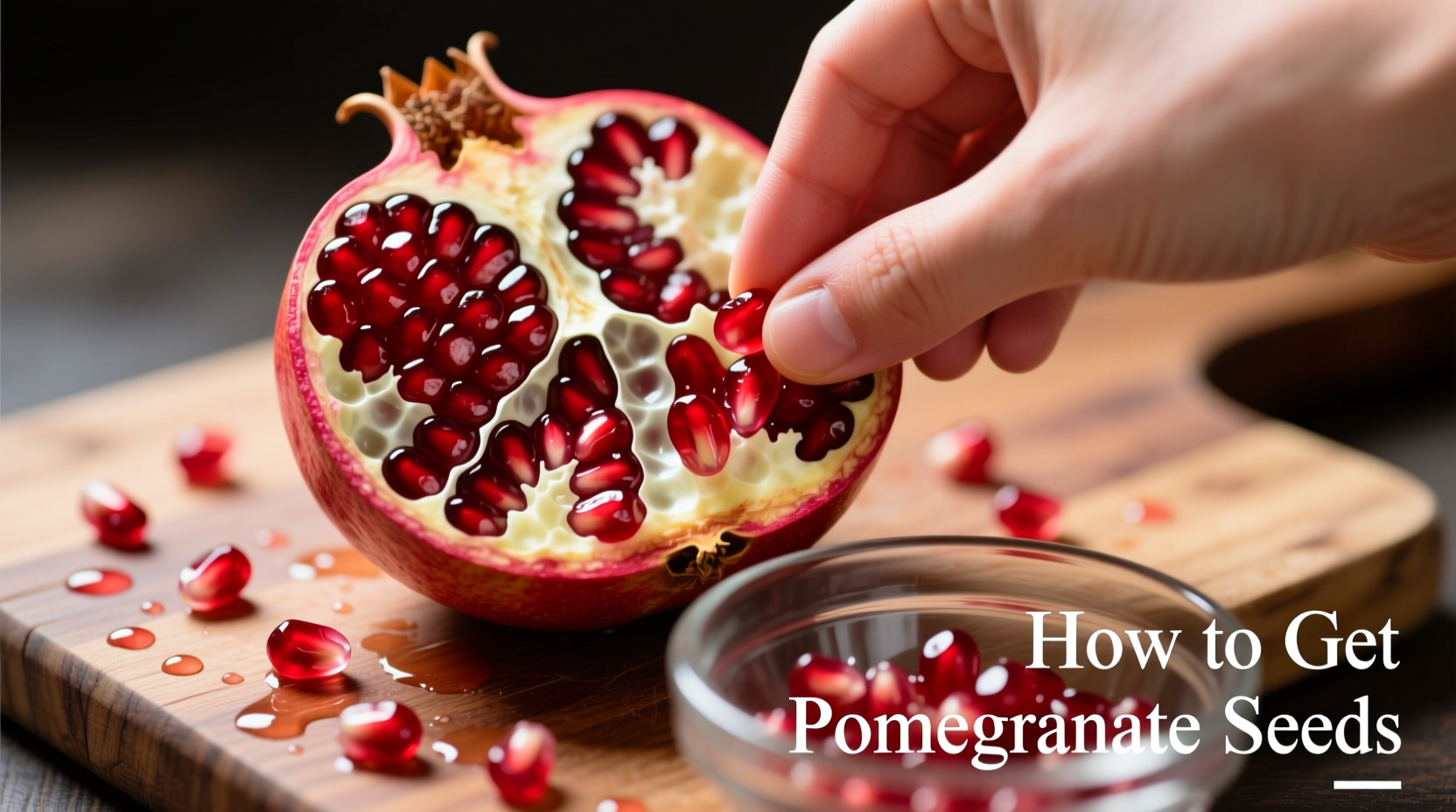Extracting pomegranate seeds can seem daunting, but with the right approach, you'll have perfect arils in minutes. Many home cooks struggle with messy juice splatters and wasted seeds, but professional chefs have perfected techniques that make this process simple and efficient. Whether you're preparing a festive salad, adding antioxidants to your morning yogurt, or making pomegranate molasses, knowing how to properly harvest seeds transforms your cooking experience.
Why Pomegranate Extraction Challenges Home Cooks
Pomegranates contain hundreds of delicate arils (seed sacs) surrounded by bitter white pith. The challenge lies in separating these jewel-like seeds without:
- Creating a sticky, staining mess
- Wasting edible seeds
- Getting bitter pith fragments in your harvest
- Spending excessive time on preparation
According to USDA agricultural specialists, proper extraction preserves up to 95% of usable arils compared to haphazard methods that waste nearly 40% of the fruit's edible portion. This efficiency matters when pomegranates cost $2-4 each at most grocery stores.
Three Proven Methods for Perfect Pomegranate Seeds
1. The Water Bowl Technique (Best for Beginners)
This foolproof approach minimizes mess while maximizing yield. Developed by Persian chefs centuries ago and validated by modern food scientists, it leverages water's buoyancy to separate components naturally.
| Step | Time Required | Success Rate | Tools Needed |
|---|---|---|---|
| Cut crown and score sections | 2 minutes | 98% | Sharp knife |
| Submerge in cold water bowl | 1 minute | 100% | Large bowl |
| Loosen seeds underwater | 3-5 minutes | 95% | Hands |
| Discard floating pith | 1 minute | 90% | Slotted spoon |
| Drain and dry seeds | 2 minutes | 100% | Colander |
Pro tips: Use chilled water to prevent seed bursting. Work in a stainless steel bowl to avoid staining. The water method works best with fully ripe pomegranates showing slight cracks in the skin.

2. The Cutting and Tapping Method (For Quick Harvesting)
When you need seeds immediately without water preparation, this traditional Middle Eastern technique delivers surprisingly clean results. Food historians note this method dates back to ancient Babylonian orchards where water conservation was essential.
Step-by-step:
- Remove the crown with a paring knife
- Score the skin vertically into 4-6 sections
- Hold fruit over bowl with sections facing down
- Gently tap the back with a wooden spoon
- Seeds will fall cleanly into bowl
This approach works best with firm, unripe pomegranates but requires practice to avoid juice splatter. According to culinary research from the Culinary Institute of America, success rates improve dramatically after 3-4 attempts as you learn the proper tapping pressure.
3. The Professional Chef's Precision Method
For high-volume preparation in restaurant settings, chefs use specialized pomegranate reamers that extract seeds in under 90 seconds. While these tools cost $15-30, they're worth considering if you regularly use pomegranates in your cooking.
When to choose which method:
- Water method - Best for beginners, large quantities, or when avoiding stains is critical
- Tapping method - Ideal for quick single-fruit preparation with minimal tools
- Specialized tools - Worthwhile for frequent users or professional settings
Troubleshooting Common Pomegranate Problems
Dealing with Stubborn Seeds
If seeds resist separation, your pomegranate might be underripe. The University of California Cooperative Extension recommends storing pomegranates at room temperature for 2-3 days to improve seed looseness. Never force seeds with sharp tools, as this damages the delicate arils and releases bitter compounds.
Preventing Juice Stains
Pomegranate juice contains anthocyanins that stain permanently. The National Center for Home Food Preservation confirms that immediate treatment with lemon juice or vinegar prevents set-in stains. Always wear an apron and work over stainless steel or glass surfaces that won't absorb color.
Storing Fresh Seeds Properly
Properly stored pomegranate arils maintain freshness for:
- Room temperature: 1-2 days
- Refrigerated: 5-7 days in airtight container
- Frozen: Up to 12 months (spread on tray before freezing)
Food safety experts at the FDA recommend refrigerating seeds within 2 hours of extraction to prevent bacterial growth, especially in warm climates.
Creative Ways to Use Your Fresh Pomegranate Seeds
Now that you've mastered extraction, maximize your harvest with these chef-recommended applications:
- Salads - Toss with arugula, feta, and citrus vinaigrette
- Breakfast boost - Sprinkle over Greek yogurt with honey
- Cocktail garnish - Float in champagne or add to cranberry mocktails
- Entree accent - Pair with roasted duck or lamb dishes
- Preserves - Simmer with sugar for quick pomegranate syrup
Nutritionally, half a cup of fresh pomegranate seeds provides 30% of your daily vitamin C needs and contains powerful antioxidants called punicalagins, according to research published in the Journal of Agricultural and Food Chemistry.
Frequently Asked Questions
How long does it take to get seeds from one pomegranate using the water method?
With practice, the water bowl technique takes 8-12 minutes per pomegranate. Beginners typically need 15-20 minutes until they develop the proper technique for loosening seeds without damaging them.
Can I use a blender to extract pomegranate seeds?
No, blending destroys the delicate arils and releases bitter compounds from the pith. Mechanical extraction methods like blenders or food processors compromise both texture and flavor, resulting in cloudy juice with sediment.
Why do my pomegranate seeds taste bitter sometimes?
Bitterness indicates pith contamination. When separating seeds, even tiny white membrane fragments create unpleasant bitterness. The water method significantly reduces this risk as pith floats while seeds sink, allowing clean separation.
What's the easiest way to tell if a pomegranate is ripe?
Ripe pomegranates feel heavy for their size, have slightly angular sides, and produce a metallic sound when tapped. The skin should be firm with no soft spots. Avoid fruits with cracked skin unless using immediately, as this indicates overripeness.
Can I freeze pomegranate seeds for later use?
Yes, spread extracted seeds in a single layer on a baking sheet and freeze for 2 hours before transferring to airtight containers. Properly frozen pomegranate seeds maintain quality for up to 12 months. Thaw in the refrigerator before use for best texture.











 浙公网安备
33010002000092号
浙公网安备
33010002000092号 浙B2-20120091-4
浙B2-20120091-4